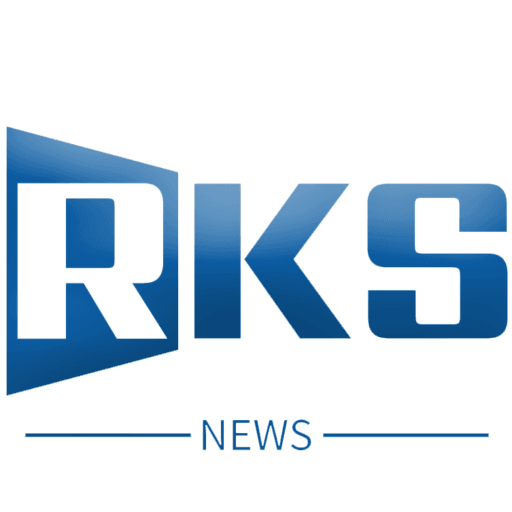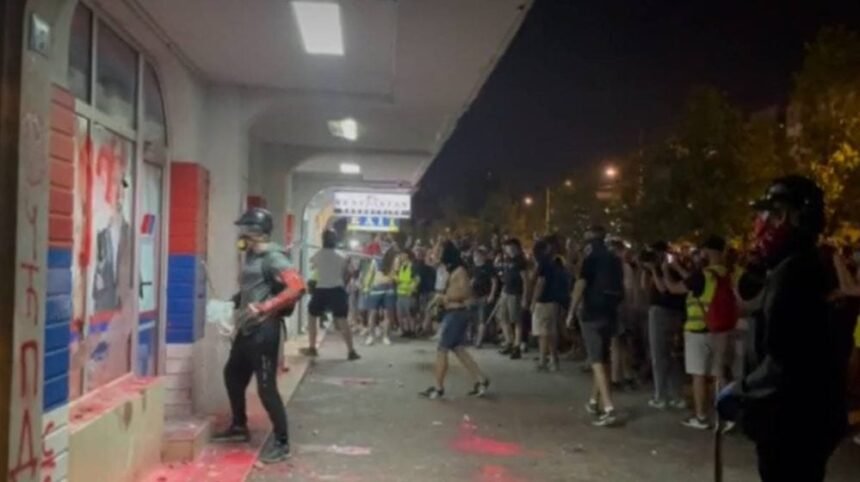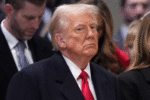German media outlets are closely following the recent escalation of protests in Serbia, highlighting violent clashes in Novi Sad, Belgrade, Vrbas, and Bački Petrovac.
According to Tageszeitung, journalist Andrej Ivanji reports that nine months of largely peaceful student-led protests against the government turned violent on Tuesday. Clashes erupted between supporters and opponents of President Aleksandar Vučić, particularly in smaller towns across Vojvodina, including Vrbas and Bačka Palanka. Students called for demonstrations under the slogan: “Serbia, wake up!“
The protests drew citizens from Belgrade, Novi Sad, Niš, Kruševac, Smederevo, Užice, Čačak, Pančevo, and Lazarevac. Heavy clashes in several cities reportedly left around 70 people injured, according to the Serbian Ministry of Internal Affairs.
Ivanji notes that the regime is pursuing a confrontational approach toward students. Special police units play only a secondary role, and when demonstrations occur simultaneously in multiple cities, they are reportedly overwhelmed. Meanwhile, activists and supporters of the ruling Serbian Progressive Party (SNS) confronted protesters, with some media identifying certain supporters as individuals with criminal records.
The coverage recalls the collapse of the canopy at Novi Sad railway station on November 1, 2024, an incident the opposition attributes to “endemic corruption.” The tragedy sparked the mobilization of 100,000 students, who have sustained a nine-month resistance against Vučić’s regime. Ivanji describes student activists as “the strongest political force in Serbia today.”
Recent reports include violent incidents at SNS party offices in Novi Sad and the siege of a location where SNS president Miloš Vučević was present with his son. Security forces reportedly removed Vučević after a gunshot was fired into the air by one of the attackers.
Tageszeitung notes that during mass protests in Belgrade, President Vučić publicly encouraged SNS members to resist demonstrators. Commentator Milan Ćulibrk observed that Vučić acted more as a party leader than as the head of state, stating that members of the SNS are now committed to defending their homes and property under a “all for one, one for all” principle. The student movement criticized this approach on social media, claiming that Vučić risks leading Serbia toward civil conflict.
Meanwhile, Rheinische Post reports that Vučić vowed to clear the streets of “hooligans” with no leniency, while framing the protests as orchestrated by critics rather than a grassroots movement. The newspaper highlights that the country remains politically divided amid ongoing anti-corruption demonstrations, with students, opposition groups, and independent media disputing the government’s narrative.
Frankfurter Allgemeine Zeitung, through journalist Niklas Cimerman, details that more than 50 people were injured in Vrbas alone over the past three days. Some clashes gained an international dimension, notably in Bački Petrovac, where SNS supporters destroyed a photo exhibition supporting student protests during an annual Slovak cultural event.
In response, Slovak Ombudsman Robert Dobrovodski contacted the Serbian Ombudsman to investigate police inaction. Opposition leader Mihal Simecka traveled to Bački Petrovac to show solidarity, while Slovak Prime Minister Robert Fico, politically aligned with Vučić, described the incidents as an internal Serbian matter, prompting criticism from the opposition for neglecting Slovak minorities abroad.
The German media coverage emphasizes the growing tensions in Serbia, highlighting the complex interplay of student activism, party loyalists, and governmental responses amid ongoing debates over corruption and democratic governance.







